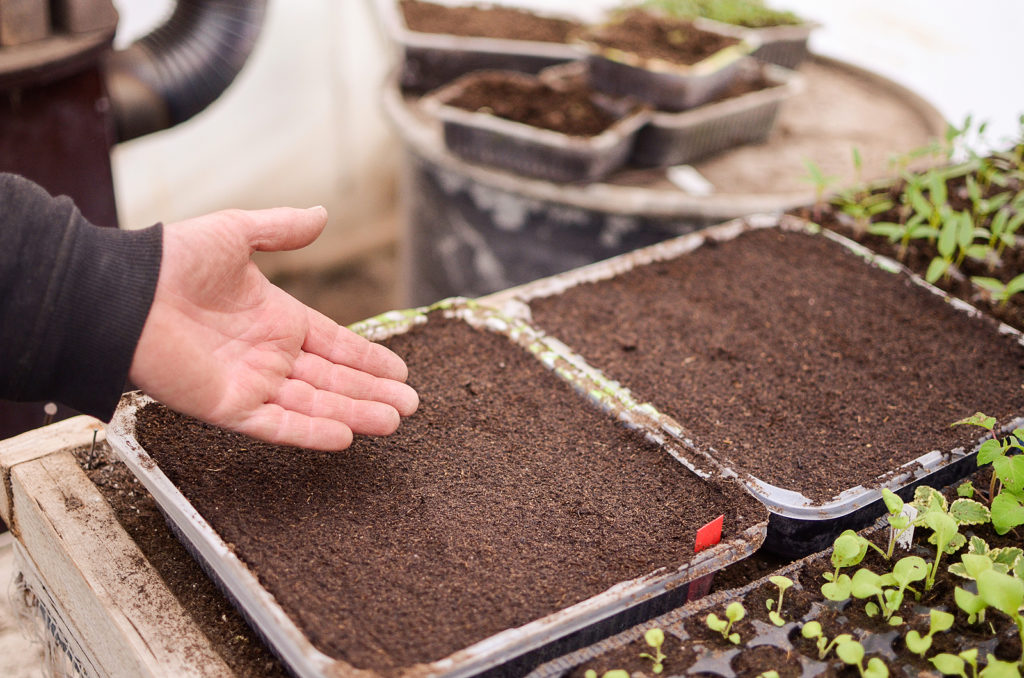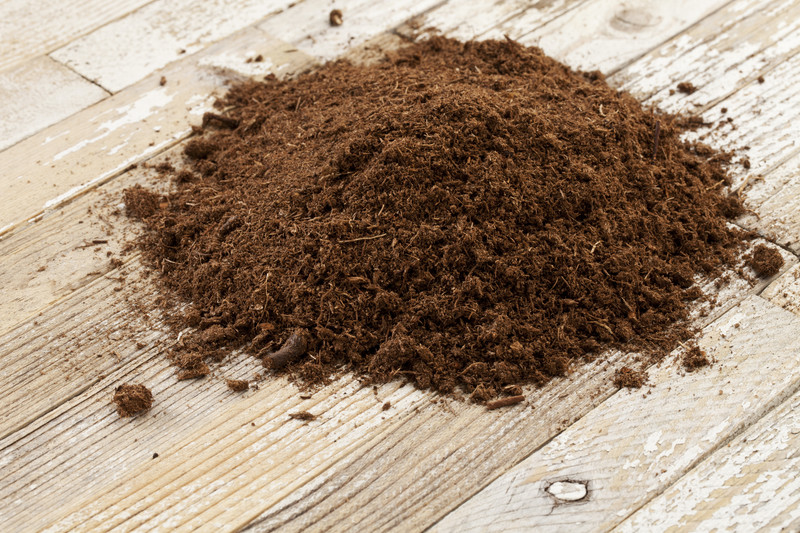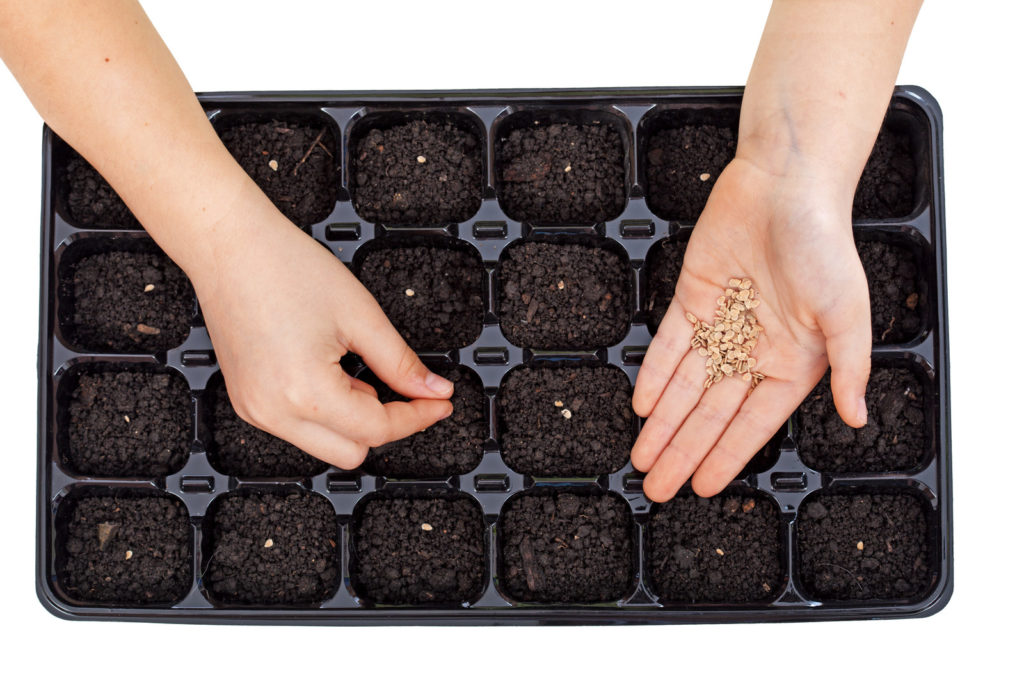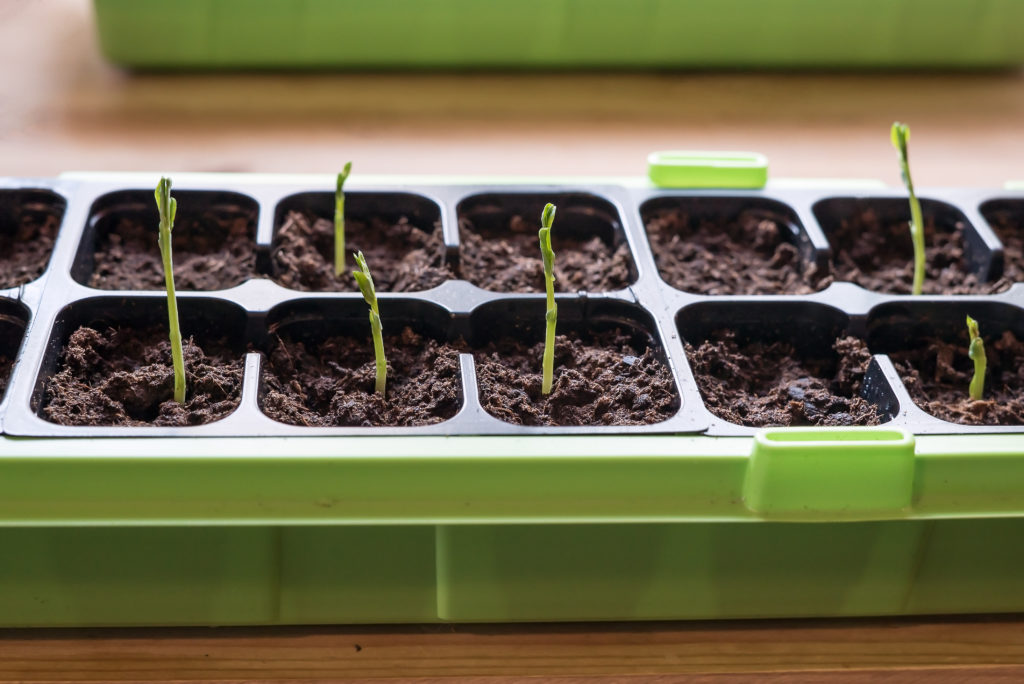Seed starting mixes are lightweight soil substitutes used for germinating seeds. Seed starting mixes commonly contain no soil, they are moisture retentive, and they are usually sterile having been exposed to high temperature to kill off bacteria. Seed starting mixes are sometimes called soilless mixes.
Having the right seed starting mix can be crucial for successful germination and healthy seedling growth. There are many options available on the market. This buying guide will help you identify your specific requirements and select the perfect seed starting mix.
Seed starting mixes are usually light browin in color and white specks. The white specks are either veremiculite or perlite and the brown is peat and other organic matter.
Most commercial seed starting mixes are fairly reliable so just look for those within your budget. Even cheaper is mixing your own from milled peat and perlite, or any recipe found online or in a good general gardening book.

How to choose a seed starting mix
With the right seed starting mix, you can ensure successful germination and healthy growth for your seedlings, setting the stage for a bountiful and beautiful garden.When choosing a seed starting mix, consider the following:
Type of seeds to germinate
Consider the types of seeds you plan to germinate. Different plants have varying needs in terms of moisture, drainage, and nutrient levels. Some seed starting mixes are specifically designed for certain types of plants, such as vegetables, herbs, or flowers. By identifying the types of seeds you will be starting, you can narrow down your choices and find a mix that suits them best.
Your growing conditions
Assess your growing conditions. If you have a greenhouse or indoor growing space with controlled temperature and humidity levels, you may have more flexibility in choosing a seed starting mix. However, if you plan to start seeds outdoors or in variable conditions, you will need a mix that retains moisture well and provides good drainage to prevent root rot.
Organic matter and nutrients
Consider the organic matter and nutrients in the seed starting mix. Organic matter, such as peat moss or coconut coir, helps retain moisture and provides aeration for roots to grow. Look for mixes that also contain added nutrients, such as compost, worm castings, or slow-release fertilizers. These additives will provide essential nutrients for seedlings as they establish their root systems and begin to grow.
Sterile mix
A sterile seed starting mix can prevent the problem of damping off, a fungal disease that kills seedlings. Most commercial mixes have been exposed to high temperatures which kill fungal and bacterial pathogens. A homemade mix may not be sterile.
Texture of the mix
Consider is the texture of the seed starting mix. Some plants, like tomatoes or peppers, benefit from a finer texture that allows for better root development. On the other hand, larger-seeded plants, such as beans or squash, may require a coarser mix that allows for better drainage. Assess the needs of the seeds you are starting and choose a mix with a texture that will support their growth.
Budget and quality
Consider your budget and the quantity of seed starting mix you will need. Seed starting mixes are available in various sizes, from small bags for a few trays to larger bags for extensive gardens. Determine how many seeds you plan to start and calculate the amount of mix required. Additionally, compare prices and consider any additional costs for shipping or purchasing in bulk.
By considering these factors and identifying your specific needs, you will be well-equipped to choose the perfect seed starting mix for your gardening endeavors. Remember to read product labels, check customer reviews, and consult with fellow gardeners or professionals for recommendations.

Seed starting mix basics to know
Which seed starting mix is optimal for your gardening needs? Here are three types of seed starting mixes to consider:
Pre-mixed
Pre-mixed commercial seed starting mixes are convenient and ready to use straight out of the bag. They usually contain a balanced blend of peat, vermiculite, and perlite, providing excellent water retention and aeration.
Do-it-yourself
DIY (do-it-yourself) mixes allow you to customize the blend according to your requirements, with the ability to adjust ratios of ingredients like peat moss, compost, and perlite.
Speciality mixes
Specialty mixes are designed for specific plant types or purposes, such as organic mixes for those who prefer an all-natural, chemical-free option.

Seed starting mix ingredients
Peat moss
Peat moss is a common component in seed starting mixes due to its excellent water retention capacity and ability to provide essential nutrients. Peat moss is the dead decayed remains of sphagnum moss. Sphagnum moss grows in wetland areas known as bogs, or peat bogs. When sphagnum moss dies, it slowly decays in the low oxygen environment and becomes peat. Peat moss holds up to 26 times its dry weight in water. Peat moss naturally stores water and nutrients that can be used by plants.
Vermiculite
Vermiculite is an organic hydrated silicate mineral, a mineral with naturally high moisture content. It is rapidly heated to extreme temperatures causing the hydrated silicate to expand and change texture from solid rock to a soft clay-like texture that is absorbent. Vermiculite aids in moisture regulation and improves aeration. Vermiculite promotes faster root growth and gives quick anchorage to young roots. Vermiculite helps retain air, plant food and moisture, releasing them as the plant requires them. Vermiculite is a hydrous phyllosilicate mineral which undergoes significant expansion when heated.
Perlite
Perlite enhances drainage and prevents compacting. Perlite is volcanic obsidian glass with a high water content that is processed into a Styrofoam textured material. The obsidian ore is rapidly heated to temperatures of 1800°F (980°C) and expands up to 20 times its original size into sturdy foam pieces. Mixes that contain only perlite are prefered to those that contain only vermiculite because vermiculite which is lighter than perlie tend to rise to the surface when water is applied.
Other ingredients
Seed starting mixes may also include other organic matter such as compost in the mix. Organic materials can contribute to soil fertility and overall plant health.

Starting mix buying tips
When selecting a seed starting mix, ensure it is sterile and free from pests or diseases. This is especially important when starting seeds indoors, as contaminated soil can lead to poor seed germination and the introduction of harmful pathogens. Look for mixes that have been heat-treated or sterilized to minimize the risk of such issues.
Look for a brand that offers a well-balanced mix of organic materials, such as peat moss, perlite, and vermiculite. These ingredients provide proper aeration, moisture retention, and nutrient availability for your delicate seedlings. Avoid mixes that contain heavy amounts of synthetic additives or chemical fertilizers, as these can be detrimental to the long-term health of your plants.
Consider the consistency and texture of the seed starting mix. It should be light and fluffy, allowing for easy root penetration and water absorption. A compacted or dense mix can impede root growth and lead to poor seedling development. Look for brands that have been finely sieved and exhibit a loose, crumbly texture when lightly pressed between your fingers.
Consider the presence of disease-prevention measures. Some brands incorporate beneficial microbes or biological agents that actively suppress harmful pathogens, such as damping-off fungi. This added protection can significantly reduce the risk of seedling losses and promote overall plant health.
Consider the reputation and reviews of the brand you are considering. Look for companies that have been in the market for a while and have positive feedback from customers. Reading reviews can give you valuable insights into the quality and performance of the seed starting mix, helping you make an informed decision. A brand that consistently delivers high-quality products and reliable results is more likely to meet your expectations.
Consider the cost. While it’s tempting to opt for the cheapest option available, keep in mind that quality often comes with a price. Investing in a reputable brand may save you money in the long run by reducing the need for additional fertilizers or pest control measures. Compare the prices and features of different brands to strike the right balance between cost and quality.
While comparing prices, take note of any additional features or benefits offered by different brands. Some seed starting mixes come enriched with organic substances or beneficial microbes, which can enhance plant health. These added benefits might justify the slightly higher price tag.
When comparing prices, it is important to consider the size of the bag or container. Some options may seem cheaper at first glance, but they might come in smaller quantities. Assess your gardening needs and determine how much seed starting mix you require. This will help you calculate the most cost-effective option in the long run.
Consider the quality of the mix. Cheaper options may have lower-quality ingredients, which can negatively impact seed germination and overall plant growth. Always look for a mix that is well-balanced in terms of nutrients, pH levels, and moisture retention.
Don’t forget to read customer reviews before making your purchase. Often, fellow gardeners share their experiences with different seed starting mixes, providing valuable insight into their performance and value for money. By learning from others’ experiences, you can choose a mix that offers the best bang for your buck.
Choosing the right seed starting mix is crucial for the success of your gardening endeavors. By evaluating different brands based on their organic composition, consistency, disease prevention measures, reputation, and cost, you’ll be equipped with the knowledge and confidence to make an informed decision.

Seed starting mix use tip
Wet the seed starting mix thoroughly before using. It is more difficult to moisten seed startin mix after seed has been sown than before sowing. Tepid or warm water is absorbed more quickly than cool or cold water.
DIY – Homemade seed starting mix formulas
A homemade seed starting mix should have a fine and uniform texture; it should be well-aerated and loose; it should be free of insects, diseases, and weed seed; it should be able to hold moisture yet also drain well. One mixture that possess these characteristics is a combination of one-third sterilized sand, one-third vermiculite or perlite, and one-third peat moss. Do not use garden soil by itself to start seedlings as it is too heavy, not sterile, and does not drain well.
Here is another DIY (do-it-yourself) seed starting mix formula: Combine 4 quarts of shredded sphagnum peat moss, 4 quaerts of fine-grade vermicululite, 1 tablespoon of superphosphate, and 2 tablespoons of ground limestone.
Here is a third formula: 50 percent vermiculite or perlite and 50 percent milled sphagnum peat moss with fertilizer.
Always mix homemade seed starting mix ingredients thoroughly. Because these mixes have little fertility, seedlings my be watered with diluted fertilizer solution soon after they emerge.
Seed starting mixes we like
Premier Horticulture 1016041RGCE Organic Pro Seed Starting Mix, 16 Quart. About $26.
Burpee Organic Coconut Coir Concentrated Seed Starting Mix, 16 Quart. About $11.50.
Sun Gro Horticulture 8-Quart Black Gold 1311002 Seedling Mix. About $18.



